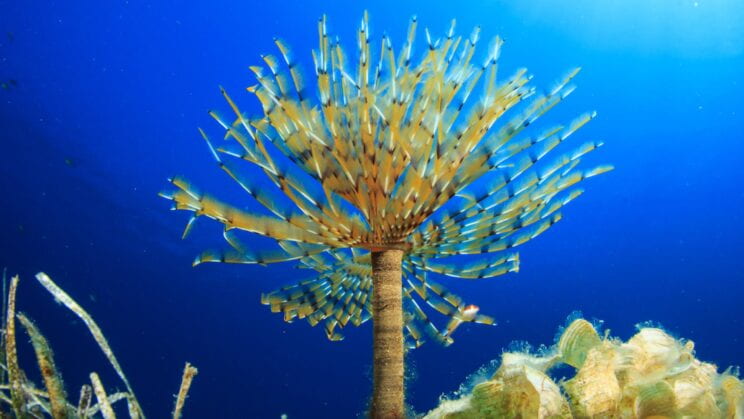Tandon researchers discover how deep-sea worms help keep natural gases on ice

An example of a feather duster worm (Sabellidae, Anelida). Photo Credit: Rich Carey
It is well known that natural gas hydrates, crystalline lattices of hydrogen-bonded water molecules that encapsulate small hydrocarbon molecules, on the ocean floors constitute both a potential accelerator of climate change and one of the greatest energy sources on Earth. But whether the huge amounts of natural gas that are so confined remain safely locked in crystalline hydrate cages, or are liberated into the ocean potentially to become atmospheric greenhouse gases, may depend in part on an unusual sea-floor symbiosis between worms and their microbial neighbors.
Researchers at the NYU Tandon School of Engineering discovered that this natural ecosystem involving feather duster worms (Sabellidae, Annelida) and both heat-generating and heat-absorbing bacteria (Archaea) that consume methane enclathrated — or locked into a crystalline structure — by hydrates in deep marine environments play a key role in maintaining equilibrium that keeps hydrates frozen.

